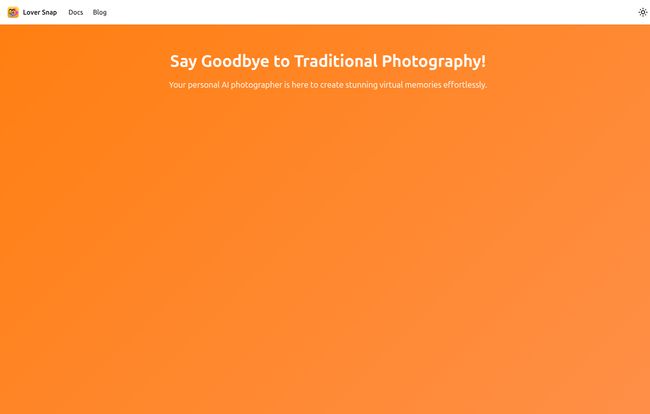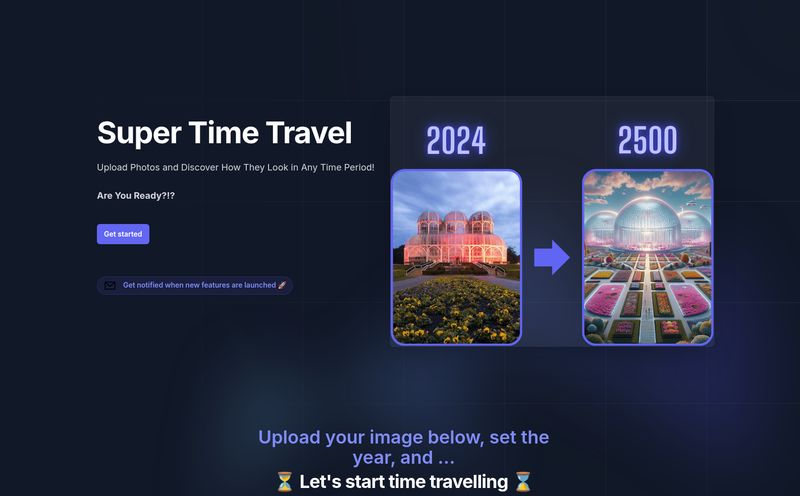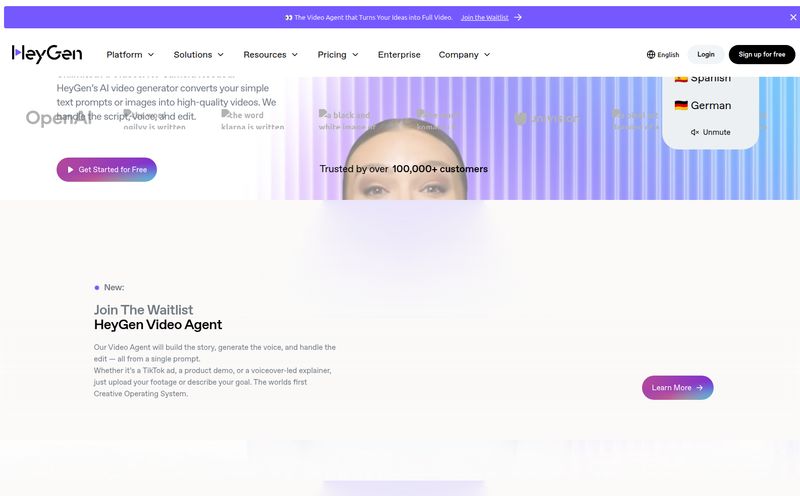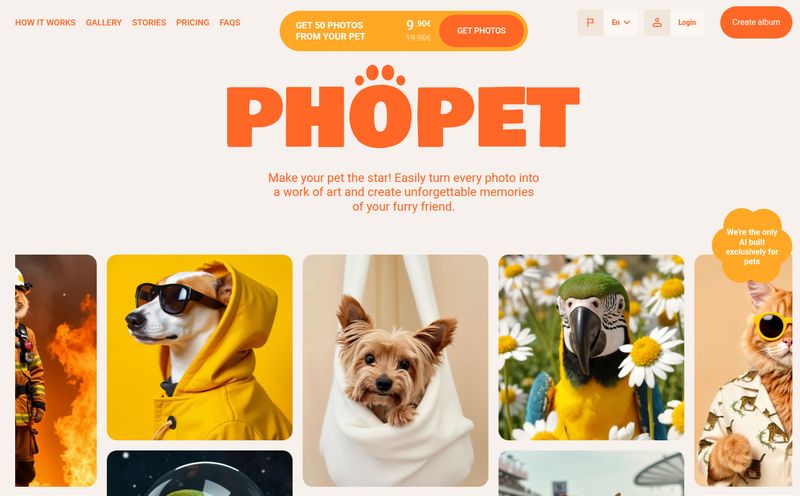I was on a video call the other day with my best friend who moved to Lisbon a few years back. We were laughing about something stupid, as we do, and I had this sudden pang of sadness. The last actual, physical photo we have together is from 2019. Four years ago. We have a million screenshots, sure, but it’s not the same as a proper picture, you know? A picture where we’re both actually there.
It’s a uniquely modern problem, isn't it? We’re more connected than ever, yet those tangible moments can feel so far apart. And right on cue, the relentless march of technology offers a potential solution. We’ve all seen the explosion of AI image generators – you type in “an astronaut riding a unicorn on Mars, in the style of Van Gogh,” and poof, you get art. But most of them feel a bit… impersonal. That’s where I stumbled upon something different, an app called Lover Snap.
It promises to use AI not to create fantasy worlds, but to bridge real-world distances, creating stunning virtual photos with the people (and pets!) you miss. But is it any good? Or is it just another app destined to be downloaded, used once, and forgotten? As someone who lives and breathes this stuff, I had to find out.
What Exactly is Lover Snap?
Let's get this straight first: Lover Snap isn’t a filter. It’s not just slapping a new background behind your selfie. The app's whole pitch is that it acts as your “personal AI photographer.” You feed it photos of yourself and a loved one, and its AI engine creates a digital version of you both. A v-clone, if you will. Then, you can place these AI characters into new scenes together—a cozy cafe, a sunny beach, you name it—and generate a brand-new, supposedly photorealistic image.
Think of it like a Photoshop wizard in your pocket, but one that specializes in people and memories. It’s an attempt to solve that “I wish we had a recent photo together” problem, even if you’re on opposite sides of the globe. A pretty ambitious idea, I've got to admit.
How It's Supposed to Work: The Three-Step Process
The company website lays out a simple three-step process, which honestly, is a relief. The last thing anyone wants is another complicated piece of tech with a steep learning curve. Here's the gist of it.
Step 1: Creating Your Digital Twin (AI Character Creation)
First, you have to create your AI character. This involves uploading a few selfies. The site says their “state-of-the-art Flux engine” then gets to work creating your virtual clone. Now, as any SEO or data person will tell you, this part is critical. The quality of your output is always, always dictated by the quality of your input. It's the old GIGO principle: Garbage In, Garbage Out. If you upload blurry, poorly lit photos taken on a potato, you can't expect a masterpiece. You'll need clear, well-lit shots for the AI to have a fighting chance.
Step 2: Setting the Scene
Once you have your digital doppelgängers, you pick a scene. The website mentions choosing from “customizable indoor and outdoor scenes.” This part makes me curious. How customizable is it? Can I change the lighting? The mood? Or am I just picking from a static list of backgrounds? The success of the final image will really hang on how well the AI integrates your character into the chosen environment.
Step 3: The Big Reveal - Generating the Photo
This is the magic moment. You hit the button, and the app generates a “photorealistic” image in what they claim is just 23 seconds. That’s fast. Almost suspiciously fast. I've spent more time than that just waiting for a web page to load. If it can genuinely produce a high-quality image that quickly, I’ll be seriously impressed.

Visit Lover Snap
So, Who Is This App Really For?
My mind immediately goes to people in long-distance relationships or families scattered across the country. It’s a sweet way to create a new shared memory, even a virtual one. It could be a really powerful tool for feeling closer to someone.
I also see a huge use case for content creators. Imagine being able to generate lifestyle shots or product photos without booking a studio or a model. TechRadar's quote on their site says it “saves time and money for creators,” and I can absolutely see that. It lowers the barrier to creating professional-looking content.
And then there's a more delicate, poignant application. Creating a new photo with a loved one who has passed away. This needs to be handled with care, but for some, it could be an incredibly healing and beautiful way to keep a memory alive. And yes, they even mention you can do this with your pets! I can already see the internet flooding with pictures of people on vacation with the Corgi they had to leave at home.
The Good, The Bad, and The AI-Generated
Alright, let's get into the nitty-gritty. No tool is perfect, especially not in the wild west of AI development. Based on what I've seen, here’s my breakdown.
On the plus side, the core concept is fantastic. It taps directly into a real human emotion—the desire for connection. The promise of simplicity is also a huge win. If it's truly as easy as they say, it could be a game-changer for people who aren't tech-savvy. FastCompany calls it “virtually limitless creativity,” and that potential for personal, unique creation is genuinely exciting.
However, there are a few things that give me pause. First, and this is a big one, it’s an iOS only app. As someone who thinks about traffic and market share, that immediately cuts out a huge chunk of potential users. Sorry, Android friends. Maybe a version for you is on the roadmap, but for now, you're out of luck. It's a bit of a frustrating choice in 2024.
Then there’s the ever-present AI ghost in the machine: the “uncanny valley.” How truly photorealsitic are these images? AI has gotten scary good, but it still has a tendency to mess up hands, create slightly glassy eyes, or produce textures that just feel… off. The final output is an AI-generated image, not a real photograph, and it’s important to remember that distinction. It’s a beautiful illusion, but an illusion nonetheless.
Let's Talk About The Cost of Virtual Memories
Here’s where things get a bit murky. I went looking for a pricing page on their website, and, well... I hit a “Page Not Found.” You can see it in the screenshot I took. A bit of a dead end. This is a classic startup move sometimes—get the hype going before finalizing the business model—but it’s not great for potential users.
So, what's the deal? Is it a one-time purchase on the App Store? Is it a monthly subscription? Or will it follow the popular credit-based system, where you buy packs of generations? Without that information, it's hard to fully evaluate the app's value. I personally find the lack of pricing transparency a little annoying. I’d recommend checking the Apple App Store directly for the most up-to-date information before you download.
A Quick Comparison to Other AI Tools
You might be thinking, “Can’t I just do this with Midjourney or DALL-E?” The answer is… sort of, but not really. While you can train models on faces with tools like Stable Diffusion, it's often complex and technical. General AI art generators are not built for this specific purpose. Lover Snap’s entire focus is its unique selling point: creating new, realistic scenes with specific, known people easily. It’s a niche tool, and in the world of software, niche can be very powerful.
Frequently Asked Questions about Lover Snap
1. Is Lover Snap available on Android?
Unfortunately, no. As of right now, Lover Snap is exclusively available for iOS devices (iPhone and iPad). They haven't announced any plans for an Android version, but it's always worth checking their site for updates.
2. How many photos do I need to upload for the AI?
The website says “a few photos” are needed to create an AI-powered virtual clone. Generally, for AI models like this, more is better. I would aim for 5-10 high-quality, well-lit photos with various angles and expressions for the best results.
3. Can I really use it for my pets?
Yes! The website explicitly mentions creating virtual photos with loved ones, “or including pets.” This is a great feature for pet owners who want to create fun, imaginative pictures with their furry family members.
4. What does Lover Snap cost?
The pricing is not clearly stated on their website. It could be a subscription, a one-time fee, or use a credit system. Your best bet is to search for Lover Snap on the Apple App Store to see the current pricing structure.
5. Is this the same as a deepfake?
Technically, the technology is related, as it involves creating realistic images of people. However, the term "deepfake" often has negative connotations associated with misinformation or non-consensual content. Lover Snap is intended for personal, creative, and consensual use—creating memories with loved ones. It's about positive creation, not deception.
My Final Thoughts
So, what’s the verdict? Lover Snap is an incredibly intriguing tool that sits at the intersection of technology and human emotion. It's not trying to be a do-it-all AI art bot; it has a clear, heartfelt purpose. The potential to create a touching, funny, or beautiful moment with someone you can’t be with is undeniably powerful.
Yes, I have my reservations. The iOS-only approach is limiting, the lack of clear pricing is a bit of a pet peeve, and the specter of the uncanny valley will always loom over AI-generated faces. But despite that, I’m optimistic. This feels like a step in a new direction for personal AI. It’s not just a novelty; it’s a tool for connection.
Will it replace traditional photography? No, of course not. Nothing can replace a real moment. But for all the moments we can't have, Lover Snap might just be the next best thing. And for someone missing a friend in Lisbon, that’s a pretty compelling offer.



